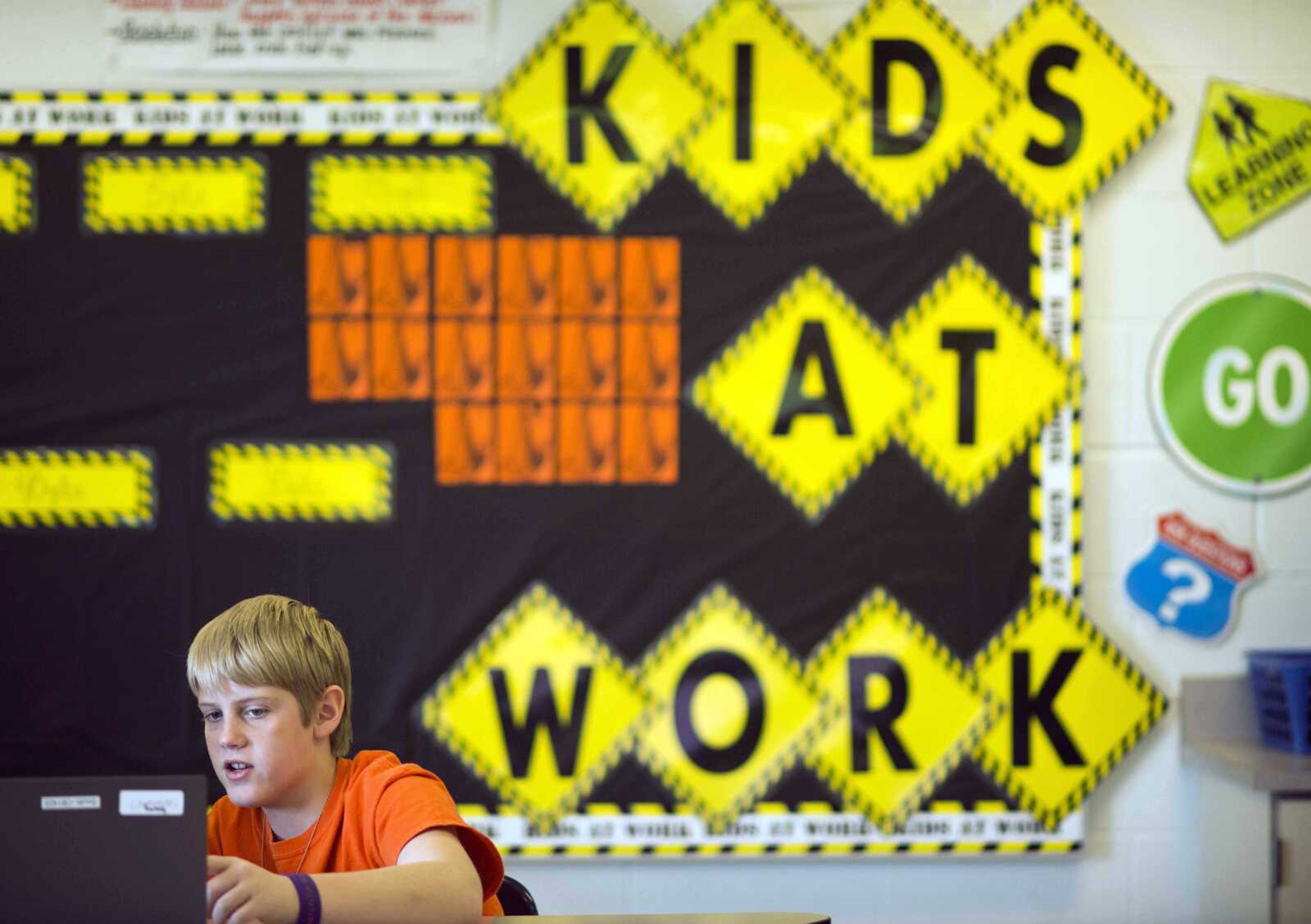Ear buds, computers needed for new standardized tests
STOCKPORT, Ohio -- Sixth-grader Kayla Hunter considers herself tech- savvy. She has a computer at home, unlike half her classmates at her elementary school. And it matches well with the one she'll use this week to take a new test linked to the Common Core standards...
STOCKPORT, Ohio -- Sixth-grader Kayla Hunter considers herself tech- savvy. She has a computer at home, unlike half her classmates at her elementary school. And it matches well with the one she'll use this week to take a new test linked to the Common Core standards.
Still, the perky 11-year-old worries. During a recent practice exam at her school in Ohio, she couldn't log on.
"It wouldn't let me," she said. "It kept saying it wasn't right, and it just kept loading the whole time."
Her state today will be the first to administer one of two tests in English language arts and math based on Common Core standards developed by two groups of states. By the end of the school year, about 12 million children in 29 states and the District of Columbia will take them, using computers or electronic tablets.
The exams are expected to be more difficult than the traditional spring standardized state exams they replace. In some states, they'll require hours of additional testing because students will have to do more than fill in the bubble. The goal is to test students on critical thinking skills, requiring them to describe their reasoning and solve problems.
The tests have multimedia components, written essays and multistep calculations needed to solve math problems that go beyond using rote memory. Students in some states will take adaptive versions in which questions get harder or easier depending on their answers.
But the tests have been caught up in the debate playing out in state legislatures across the country about the federal role in education.
Although more than 40 states have adopted Common Core, which spells out what reading and math skills students should master in each grade, several have decided not to offer the tests -- known as the Smarter Balanced Assessment Consortium and Partnership for Assessment of Readiness for College and Careers, or PARCC. Some states are introducing other new state standardized tests this year.
The Common Core tests fulfill the requirement in the federal No Child Left Behind law for annual testing in reading and math in grades three to eight and again in high school.
But as Congress seeks to rewrite the education law, there's debate over whether the tests should be required by Washington, and whether students are being tested too much.
Parents in pockets of the country have joined a movement to "opt out" of these standardized tests.
Questions also have been raised about students' keyboarding skills and schools' computer capacities.
In the Appalachian foothills where Kayla attends Morgan South Elementary School, administrators and teachers worry they don't have the bandwidth to provide reliable Internet connectivity on testing day.
Both tests offer a paper option. PARCC officials anticipate that about a quarter of students will use the paper version; Smarter Balanced officials estimate roughly 10 to 20 percent will take it on paper.
Just eight days before the test, the Morgan Local School District in rural southeastern Ohio ordered 200 more Chromebooks, which worked best during the practice run.
The week before the test, Kayla and her classmates huddled in pairs sharing what devices were available at the school. "They'll be more comfortable with the technology, but it is a worry of mine that, as far as the content that's on it, there's still stuff I could be doing to prepare for the test," says their teacher, Carrie Young.
Eleven-year-old Colton Kidd says the screens on the Chromebooks are too small. Classmate Josie Jackson, 12, prefers pencil and paper. But Liam Montgomery likes computerized tests: "It's easier to get the answers down, because I don't have to flip back and forth."
In some places, school administrators and state leaders are only grudgingly moving forward.
Referencing federal law, Illinois State Board of Education officials threatened to withhold funds from any district that didn't administer the PARCC exam. Chicago Public Schools officials cited technology concerns in announcing they won't give the exam in a majority of its schools.
Trisha Kocanda, superintendent of the Winnetka Public Schools in Illinois, told parents that she's concerned about the length of the tests and the "excessive rigor."
"We grow wary," Kocanda said, adding, that they believe "this test continues the overemphasis on standardized assessments as evaluation tools for students and schools."
In Louisiana, Gov. Bobby Jindal's effort to stop the PARCC exam was derailed by a state judge who said the governor's actions were harmful to parents, teachers and students. Jindal has said he took the action because he opposes what he views as federal intervention in the adoption of the standards.
Officials from the testing groups stand by the tests. In each of the states, students will see something that's familiar and something that's "new, different and exciting," said Tony Alpert, executive director for Smarter Balanced.
"Smarter Balanced took the best of what states had in their previous systems and we made sure each state had access to that," Alpert said.
Laura Slover, the chief executive officer of PARCC, said the tests have an important equity component because parents can compare how their students are doing in comparison to students in other states.
Education Secretary Arne Duncan said states are going to "figure this out together."
"I think change is hard but anyone who thinks we should just do fill in the bubble tests and not look at critical thinking ... I don't quite understand that," Duncan said.
Connect with the Southeast Missourian Newsroom:
For corrections to this story or other insights for the editor, click here. To submit a letter to the editor, click here. To learn about the Southeast Missourian’s AI Policy, click here.








